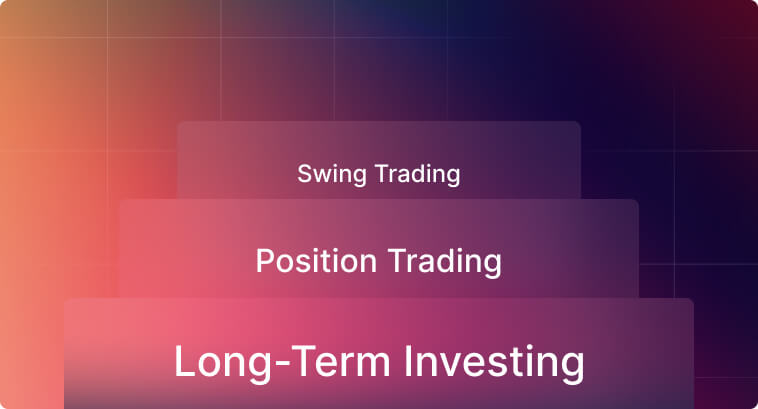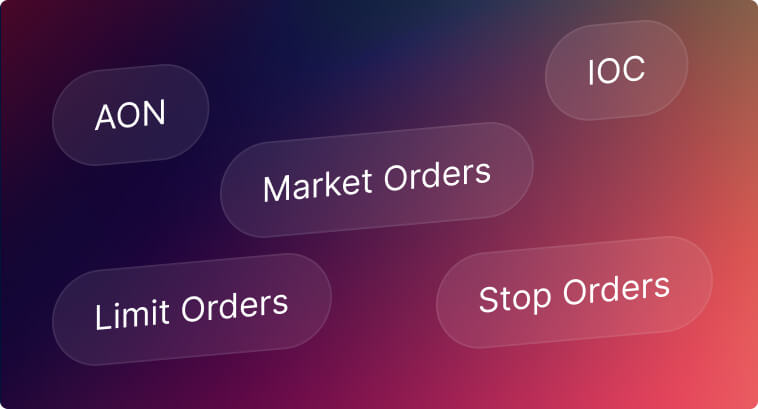Different Types of Stock Trading: From Day Trading to Long-Term Investing


Stock trading, also known as investing in the stock market, is the practice of buying and selling shares of publicly traded companies with the goal of making a profit. Among the ways of stock trading, traders employ different strategies to capitalize on short-term price movements, unlike long-term trading, which focuses on steady growth over time. Traders closely watch the fluctuations in stock prices, aiming to buy when prices are low and sell when they rise. This form of trading, known as day trading, can lead to quick profits, but it also carries significant market risks, as stock prices can be highly volatile.
The stock market offers various types of trading strategies, and understanding these is important for success. For most people, it is safer to choose a way focused on long-term, diversified options like index or mutual funds. Still, for those with extra capital and a willingness to learn, online brokerages, including the national stock exchange and bombay stock exchange, now make it easy to engage in stock trading in India through computers or mobile apps.
Intraday trading, often referred to as day trading, involves buying and selling stocks within the same trading day, meaning all positions are closed before the trading session ends. This type of day trading is characterized by a high volume of trades, where traders use various ways of trading strategies to profit from small price fluctuations throughout the day. While each individual trade might yield only a modest profit, the cumulative returns can be substantial due to the large number of trades executed. However, this strategy also carries significant risks, as any incorrect decision or unexpected movements in the market can result in losses.
Unlike intraday trading, where there is no opportunity to “wait out” a downturn, long-term trading allows investors to endure market fluctuations over time. Intraday trading is one of the more demanding trading types, requiring constant market analysis, quick decision-making, and the ability to manage both psychological and financial pressure effectively. Despite these challenges, this style is appealing to those who can handle its intensity, as it offers the potential for higher returns compared to more passive investment strategies.
Among the many stylies of stock trading, common types of intraday trading include:
Traders employ different techniques and tools, such as automated trading systems and technical analysis, to make trading decisions quickly and efficiently.

Multi-session involve holding positions for more than a single trading day, allowing traders to capitalize on price movements that unfold over several days, weeks, or even months. This type of trading takes advantage of trends in the stock exchange that are not immediately visible within the confines of one trading session. Types of trading in stock fall under this category, each suited to different conditions and trader objectives.
Definition: This is a medium-term strategy where traders hold stocks for several days to weeks, aiming to profit from anticipated short- to medium-term price movements. This kind of trading allows for greater flexibility in responding to fluctuations than day trading.
Characteristics: Swing traders often employ a combination of technical analysis, such as chart patterns and indicators, along with fundamental analysis to assess a stock’s underlying value. This way of trading focuses on identifying and exploiting price trends, support and resistance levels, and other technical signals. Unlike intraday trading, this one involves holding positions overnight, thus exposing traders to potential overnight and weekend risks.
Pros: Trend trading offers a balance between the fast pace of intraday trading and the slower pace of long-term investing. This trading style requires less frequent monitoring compared to intraday strategies, allowing traders to capture larger price movements over time. This is one of the common types of trading that blends short-term tactics with a longer horizon.
Cons: However, swing traders must be mindful of market risks that arise from holding positions overnight. These risks can lead to price gaps when markets reopen, especially after significant news or events. Patience is a key trait for swing traders, as trades may take several days or weeks to reach their full potential. Traders must also choose a style that aligns with their risk tolerance and market outlook.
Definition: Position trading involves holding stocks for several weeks to months, or even longer, to profit from sustained trends in the market. This strategy is akin to long-term investing but with a focus on identifying and riding major movements.
Characteristics: Position traders rely heavily on fundamental analysis, including economic indicators, company performance metrics, and broader market conditions, to make informed decisions. Technical analysis may also be used to fine-tune entry and exit points. This type of trading allows traders to take advantage of long-term trends without the need for constant market monitoring.
Pros: The primary advantage of position trading is the potential for significant returns by capturing large market trends over an extended period. This approach is less time-intensive swing trading, as trades are held for longer durations. Position trading is particularly suited for traders who prefer a more hands-off approach while still engaging with market trends.
Cons: Position traders face higher exposure to risk, including the impact of economic downturns and adverse news on stock prices. The extended time horizon requires a deep understanding of fundamentals and the ability to stay committed to a trading plan despite short-term volatility. This trading style can be more suitable for those who have the patience and discipline to hold their positions over months, waiting for the market to move in their favor.
Definition: This is is a strategy that involves buying and holding stocks for several years, with the expectation that their value will appreciate over time. This strategy is foundational in building wealth through the compounding of returns.
Characteristics: Long-term investing is rooted in fundamental analysis, with a focus on the intrinsic value of companies. Investors consider factors such as earnings growth, dividends, and the overall economic environment to make investment decisions. This type of trading is often employed by those looking to build a solid portfolio over many years, relying on the resilience of the market.
Pros: This type of investing benefits from the compounding of returns and typically incurs lower transaction costs due to fewer trades. It is also less stressful, as investors do not need to constantly monitor market movements. This strategy is considered a traditional method of stock trading and is less susceptible to short-term fluctuations, making it ideal for those with a longer investment horizon.
Cons: The downside of long-term investing is that it may miss out on short-term opportunities. Additionally, it requires a great deal of patience and the ability to endure market volatility without reacting emotionally. Unlike trading based on short-term conditions, long-term investing requires a steadfast commitment to the underlying fundamentals of the stocks in the portfolio.

tock orders come in a variety of types, each tailored to serve different approaches and risk management objectives. These orders provide traders with the tools they need to execute their trades in a way that aligns with their specific goals, whether it’s maximizing profits, minimizing losses, or ensuring quick execution. Getting known the nuances of each order type is crucial for effectively navigating the stock market and making informed decisions that suit your investment approach.
When comparing various kindes of stock trading, it’s important to weigh the unique advantages and disadvantages of each method. Each trading style offers distinct benefits and potential risks, making it crucial for traders to choose an approach that aligns with their financial goals, risk tolerance, and time commitment. Knowing these differences can help traders make informed decisions and optimize their trading styles.
The choice of trading style depends on factors such as time availability, risk tolerance, capital, and personal preferences.
Each type of trading requires different skills and resources:
Psychology plays a crucial role in trading success, significantly influencing decision-making and overall performance. Traders’ emotions and mindset can impact how they respond to market movements, manage risks, and adhere to their strategies. Understanding and managing psychological factors, such as fear, greed, and stress, is essential for maintaining discipline and making sound trading decisions:
Different trading approaches rely on a mix of techniques and tools suited to their specific strategies. These might involve technical analysis, chart patterns, indicators, and trading platforms that aid in market data analysis and trade execution. The selection of these tools and techniques is influenced by the trading style—be it short-term or long-term—and the trader’s experience and preferences. Utilizing these resources effectively can significantly improve a trader’s ability to make informed decisions and achieve their trading goals.
Choosing the appropriate trading style depends on your personal goals, time availability, and capital. Each style has its own demands and advantages, so aligning your choice with your resources and objectives is key to successful trading.
Various trading styles come with varying regulatory implications. These can include specific account types, margin requirements, tax considerations, and compliance with financial regulations. Understanding these regulatory aspects is essential, as they can influence the costs, risks, and legal obligations associated with each trading style. Traders must ensure they meet the necessary requirements to operate within the rules and protect their investments.
In summary, stock trading offers a variety of approaches, each with its own set of characteristics, advantages, and challenges. By understanding the different types of trading traders can select the most appropriate strategy based on their goals, time availability, and risk tolerance. Combining different trading styles can also help create a diversified and balanced portfolio, allowing traders to capitalize on various market conditions. As you explore these strategies, consider how each might align with your objectives, and take the time to develop the skills and mindset necessary for success in the world of stock trading.